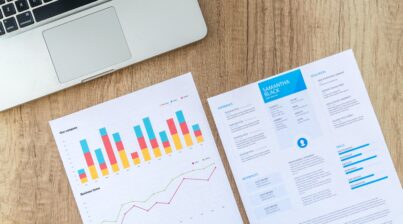Being in the people analytics business, here at Employee Cycle we like to watch what’s happening in the HR industry. Trends, data, analytics, etc. you name it, we track it. We’ve been watching the HR analytics roles growing, which is an exciting pattern to see develop! In fact, according to the LinkedIn Jobs on the Rise 2023 report, the Human Resources Analytics Manager position is second on the list. So, let’s dig deeper into what HR analytics is all about.
What Is HR Analytics?
HR Analytics (also known as People Analytics) is the use of data, statistical analysis, and technology to inform and improve HR practices. It involves collecting and analyzing data on various aspects of the workforce. These areas include talent acquisition, talent management, employee engagement, and performance management, to gain insights and make data-driven decisions. With Employee Cycle’s HR Analytics Dashboard, we make the job easier. We collect all the workforce data from your disparate systems and bring it into an easy-to-read and visualize dashboard.
There are three main goals of HR analytics:
- Help organizations better understand their workforce
- Identify areas for improvement
- Optimize HR practices to support business goals
HR analytics covers a wide range of activities. From data collection and analysis to the development of dashboards, reports, and other visualizations. It requires skills in data analysis, HR practices, and technology, and often involves collaboration between HR, IT, and other stakeholders. As data-driven decision-making becomes increasingly important in organizations, HR analytics is becoming an increasingly critical function within HR. We see a growing number of organizations are investing in the development of their HR analytics capabilities. Now, let’s look at the various roles that involve HR analytics.
What Are Typical HR Analytics Roles?
HR analytics roles can vary depending on the size and type of the organization. They may also have different titles or responsibilities in different industries or countries. Here are a few typical HR analytics roles:
HR Analytics Manager
An HR Analytics Manager – also known as Workforce Analytics Manager or Talent Analytics Manager – is responsible for leading the HR analytics function within an organization. They develop and implement HR data strategies and use data and analysis to inform and improve various aspects of HR. These include talent acquisition, talent management, employee engagement, and performance management. Some specific responsibilities of an HR Analytics Manager may include:
- Collecting, analyzing, and interpreting HR data from various sources, such as HR systems, surveys, and workforce data.
- Developing and implementing HR data strategies, including defining key metrics, tracking HR data, and analyzing results.
- Communicating insights and recommendations to HR leaders and stakeholders, including senior management, HR teams, and business leaders.
- Collaborating with HR teams, IT teams, and other stakeholders to ensure effective data collection and management processes are in place.
- Staying up-to-date with industry trends and best practices in HR analytics and incorporating these into the HR Analytics function.
An HR Analytics Manager is typically a senior-level position within the HR function. The role requires a strong background in HR and data analysis. Experience leading teams and driving change within organizations is also key.
HR Data Analyst
An HR Data Analyst is responsible for collecting, analyzing, and interpreting HR data. They typically are the ones to present insights to HR leaders and stakeholders. They use data and analysis to inform and improve various aspects of HR. These areas include talent acquisition, talent management, employee engagement, and performance management. Some specific responsibilities of an HR Data Analyst may include:
- Collecting HR data from various sources, such as HR systems, surveys, and workforce data.
- Cleaning and transforming HR data to ensure accuracy and reliability.
- Analyzing HR data to identify trends and patterns.
- Interpreting HR data and presenting insights and recommendations to HR leaders and stakeholders.
- Collaborating with HR teams, IT teams, and other stakeholders to ensure effective data collection and management processes are in place.
HR Metrics and Reporting Specialist
An HR Metrics and Reporting Specialist is responsible for tracking, analyzing, and reporting on HR metrics. They use HR data to develop dashboards, reports, and other visualizations to communicate HR metrics and insights to HR leaders and stakeholders. Some specific responsibilities of an HR Metrics and Reporting Specialist may include:
- Defining and tracking HR metrics, such as employee turnover, engagement, and satisfaction.
- Analyzing HR metrics to identify trends and patterns.
- Developing dashboards, reports, and other visualizations to communicate HR metrics and insights to HR leaders and stakeholders.
- Collaborating with HR teams, IT teams, and other stakeholders to ensure accurate and timely reporting of HR metrics.
- Staying up-to-date with industry trends and best practices in HR metrics
- Reporting and incorporating best practices into the HR metrics and reporting function.
Both HR Data Analysts and HR Metrics and Reporting Specialists play a key role in helping organizations understand and improve their HR practices using data and analysis. They typically have strong backgrounds in data analysis and experience working with HR data and systems.
What Are Some Important HR Analytics Statistics?
HR analytics roles are growing quickly. The importance of using data-driven decisions in the workforce and understanding HR analytics isn’t just a good skill set for HR professionals. It’s a necessity. In fact, a recent survey from Insight222 shows that 90% of companies believe workforce data and analytics are integral to their HR strategy. No wonder these roles are on the rise. Zippia research shows there are over 235K HR analysts employed in the U.S.; 71% are women; the finance industry is the highest paying for these roles; and 49% are more likely to work and public companies.
Now let’s revisit the HR analytics roles listed above and see what the typical salary ranges are. Please note, these salary ranges are estimates based on data from various sources, companies, and locations. And, the ranges reflect factors such as years of experience, level of education, and specific skills and certifications.
- HR Analytics Manager: $120,000 – $150,000 per year
- HR Data Analyst: $75,000 – $115,000 per year
- HR Metrics and Reporting Specialist: $80,000 – $110,000 per year
Based on current HR analytics results in the field, it’s easy to assume the future looks bright. According to The HR Digest, here’s what we can expect to see more of when HR Analysts are on the HR team:
- Managers understanding the effects of technology on their workforce
- Leaders being able to predict employee behavior
- Companies making better decisions about hiring and firing
- Employees enjoying improved work experience and engagement
Putting All The Pieces Together
Here at Employee Cycle, we have a simple mission: To make HR smarter and more data-driven. And our HR Analytics Dashboard can help HR professionals with analytics roles do their jobs better in several ways:
- Streamlined data access: The dashboard provides a centralized, easy-to-use interface for accessing HR data from multiple sources. This can save HR analytics professionals time and effort compared to manually collecting and cleaning data.
- Improved data visualization: The dashboard provides a range of interactive visualizations and reports, including graphs, charts, and tables, that can help HR analytics professionals quickly understand and communicate key trends and insights in the data.
- Enhanced decision-making: The dashboard provides real-time access to up-to-date HR data, which can help HR analytics professionals make informed decisions more quickly and accurately. The dashboard also supports the ability to drill down into specific data points, which can help HR analytics professionals uncover deeper insights into HR trends and patterns.
- Better collaboration: The dashboard supports collaboration between HR analytics professionals and other stakeholders, including HR managers and business leaders, by providing a shared view of HR data and insights. This can help HR analytics professionals communicate the results of their analyses more effectively and drive action based on data-driven insights.
- Automated reporting: The dashboard can automate many of the manual reporting processes, freeing up HR analytics professionals to focus on more strategic and impactful work. Additionally, the dashboard can help ensure that data-driven insights are communicated to the right stakeholders in a timely and consistent manner.
We believe we can help HR professionals do their jobs more efficiently and effectively. How? By providing easy access to data, improved data visualization, enhanced decision-making, better collaboration, and automated reporting. Want to see the HR Analytics Dashboard in action? Schedule your demo today.












